
About
A series of mixed media, textile-based works that challenge notions of women’s creaturely containment and domestication, ‘heirloom’ is a celebration of inheritance, of grandmothers, of the ephemeral wild and those invisible threads that move and shape us no matter how seemingly distant and unknown.
Wearable sculptural forms, video and installation, all draw inspiration from the traditional Eastern European flower headdresses made and worn by women (in Polish, known as ‘wianek’). Each piece utilises vintage linen ‘Australiana’ textiles, specifically ‘made in Poland’, Japanese linen and/or silk thread, and materials/objects from the 'natural' and 'wild' world.
Since coming into the world, ‘heirloom’ pieces have been exhibited in solo and group exhibitions in Warsaw, Melbourne, Sydney and Ivano-Frankivs’k in Ukraine. They also featured in MADE’s major dance work for 2022, ‘Heirloom’, which Grace was artistic director, sound designer and choreographer.
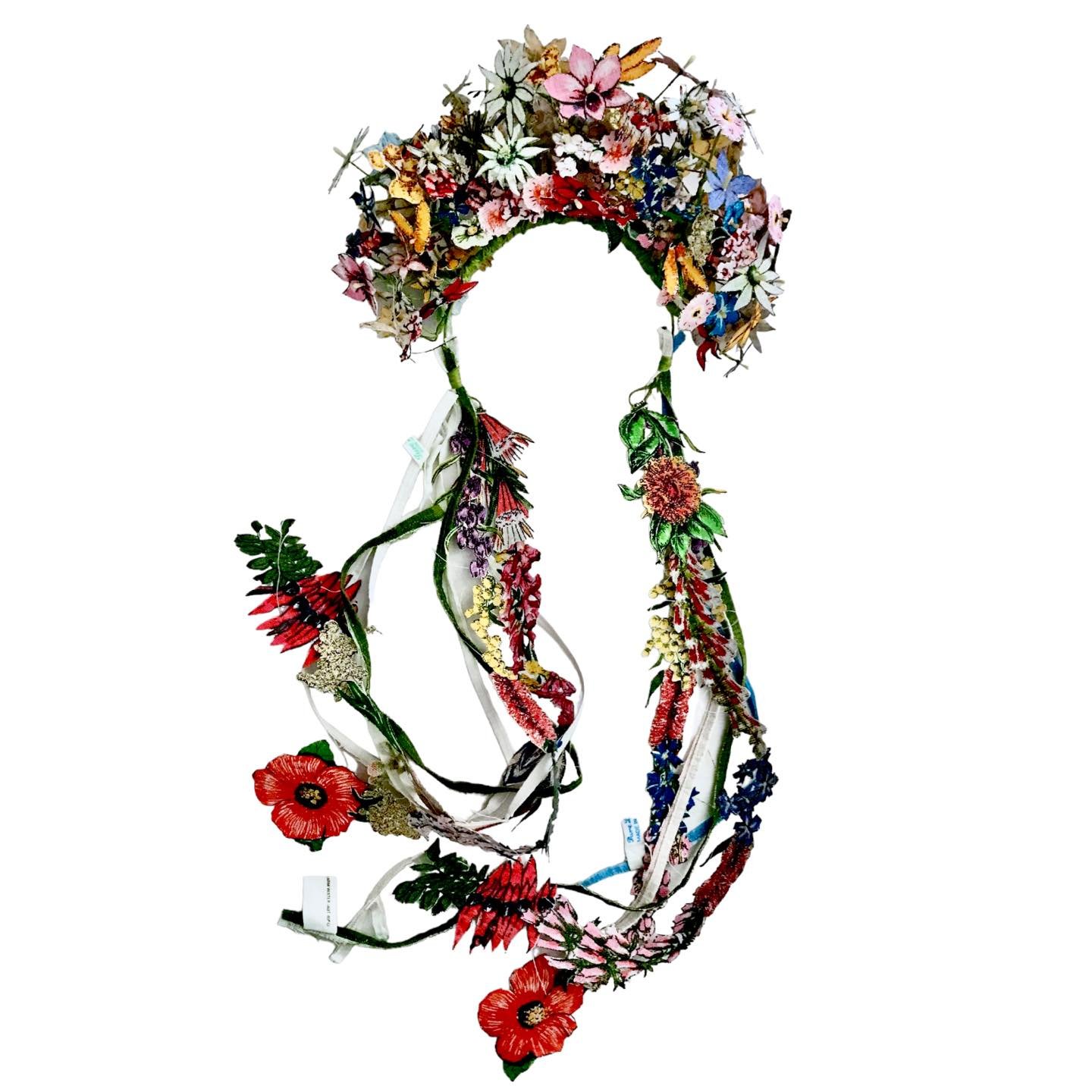
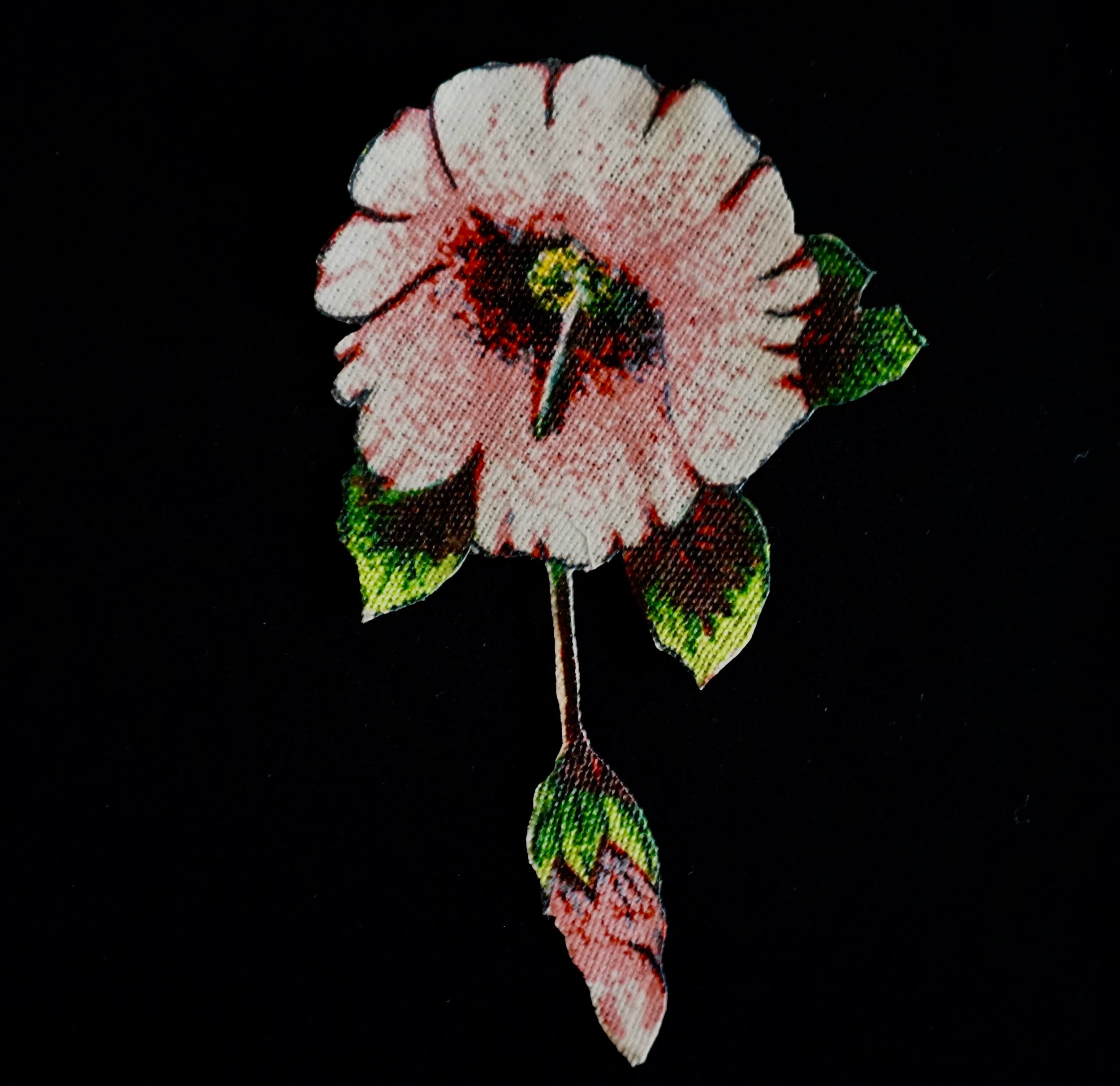
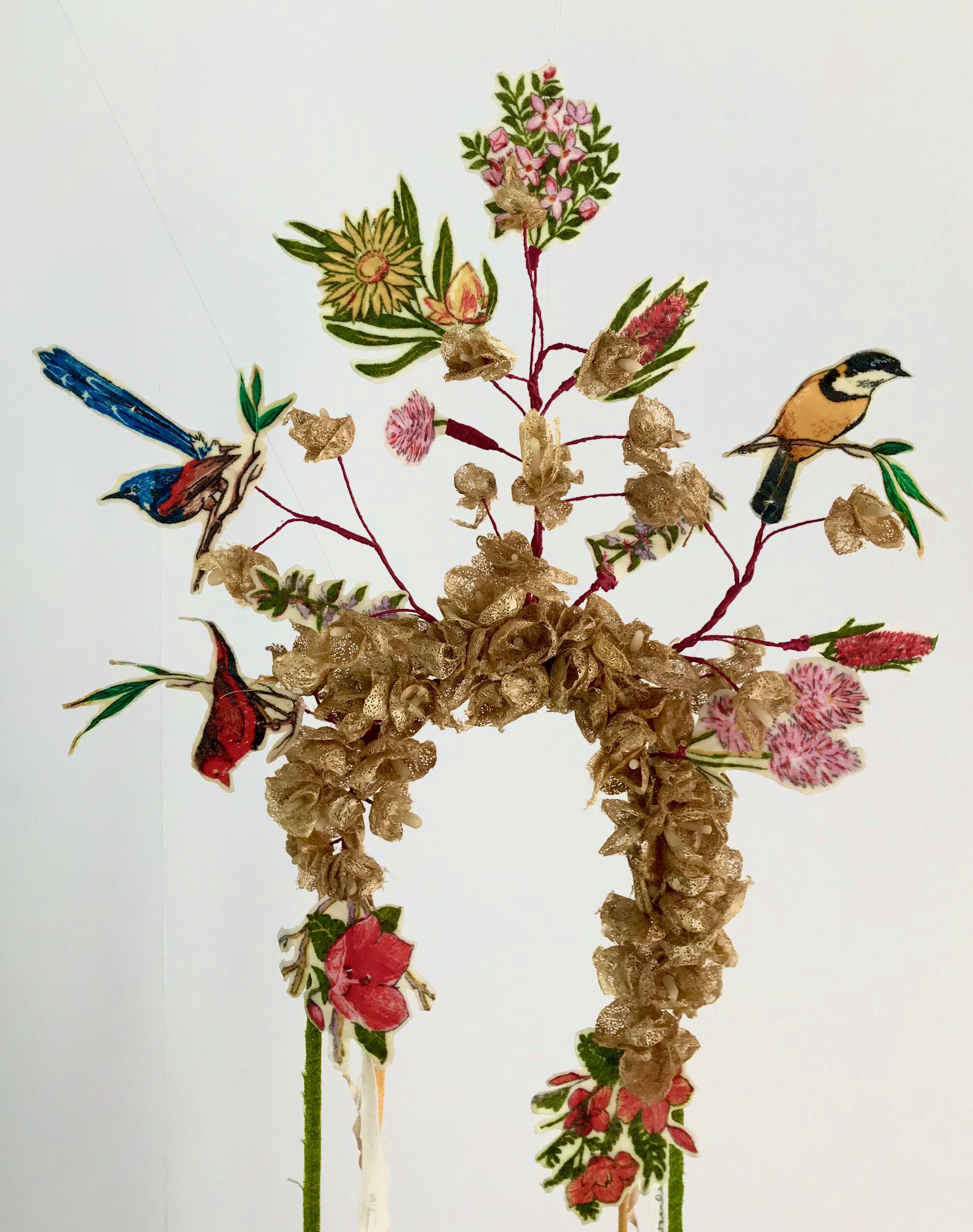
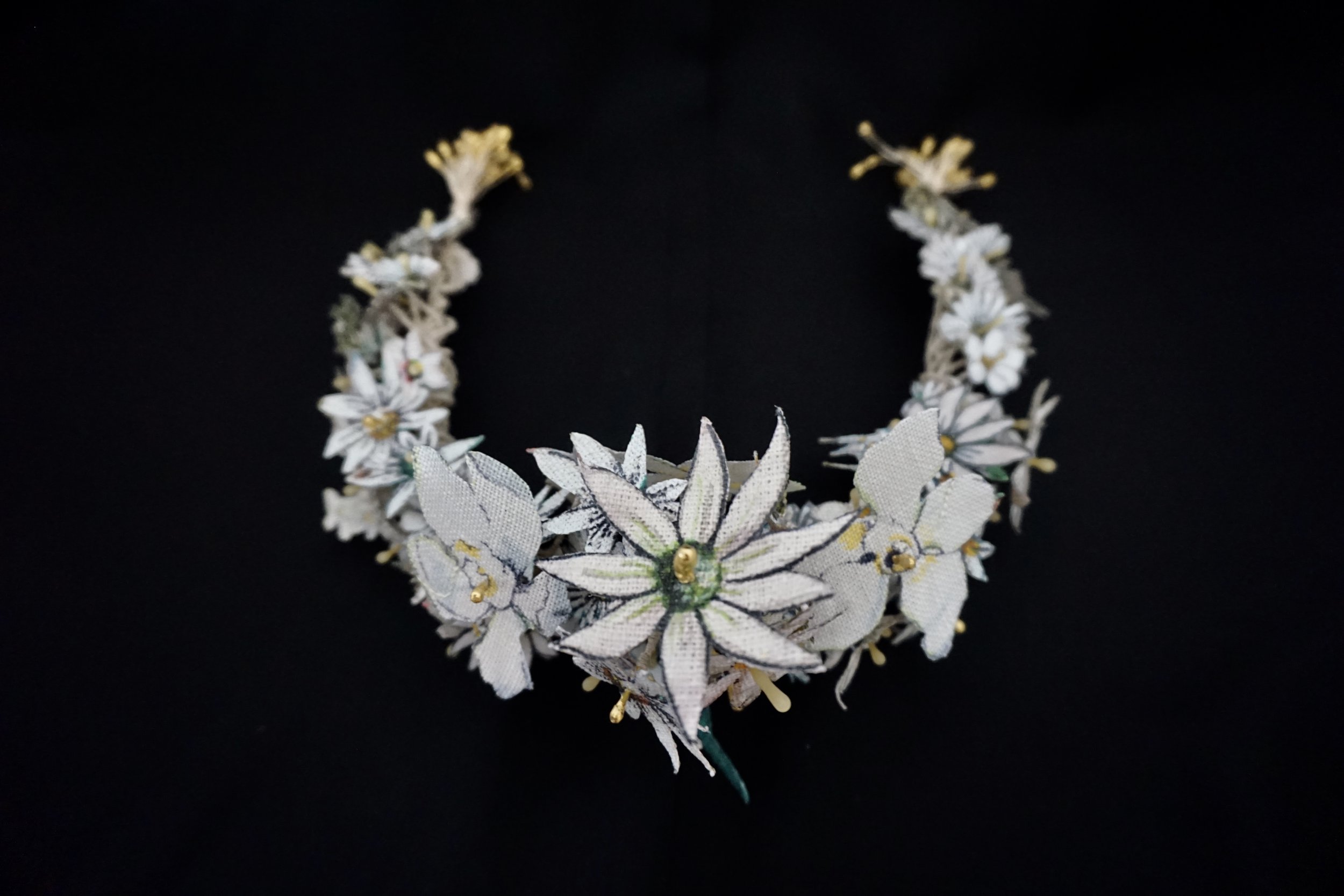
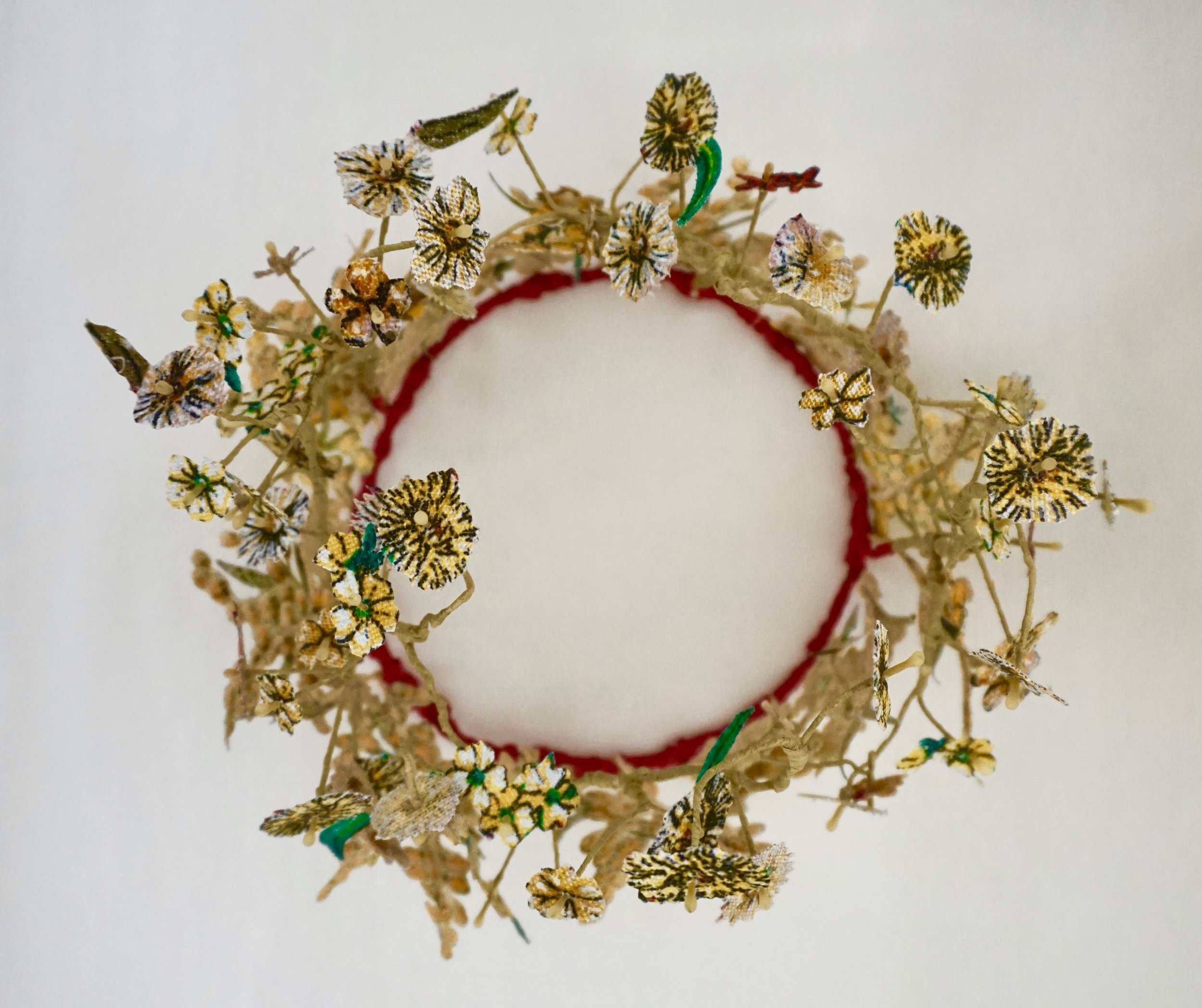
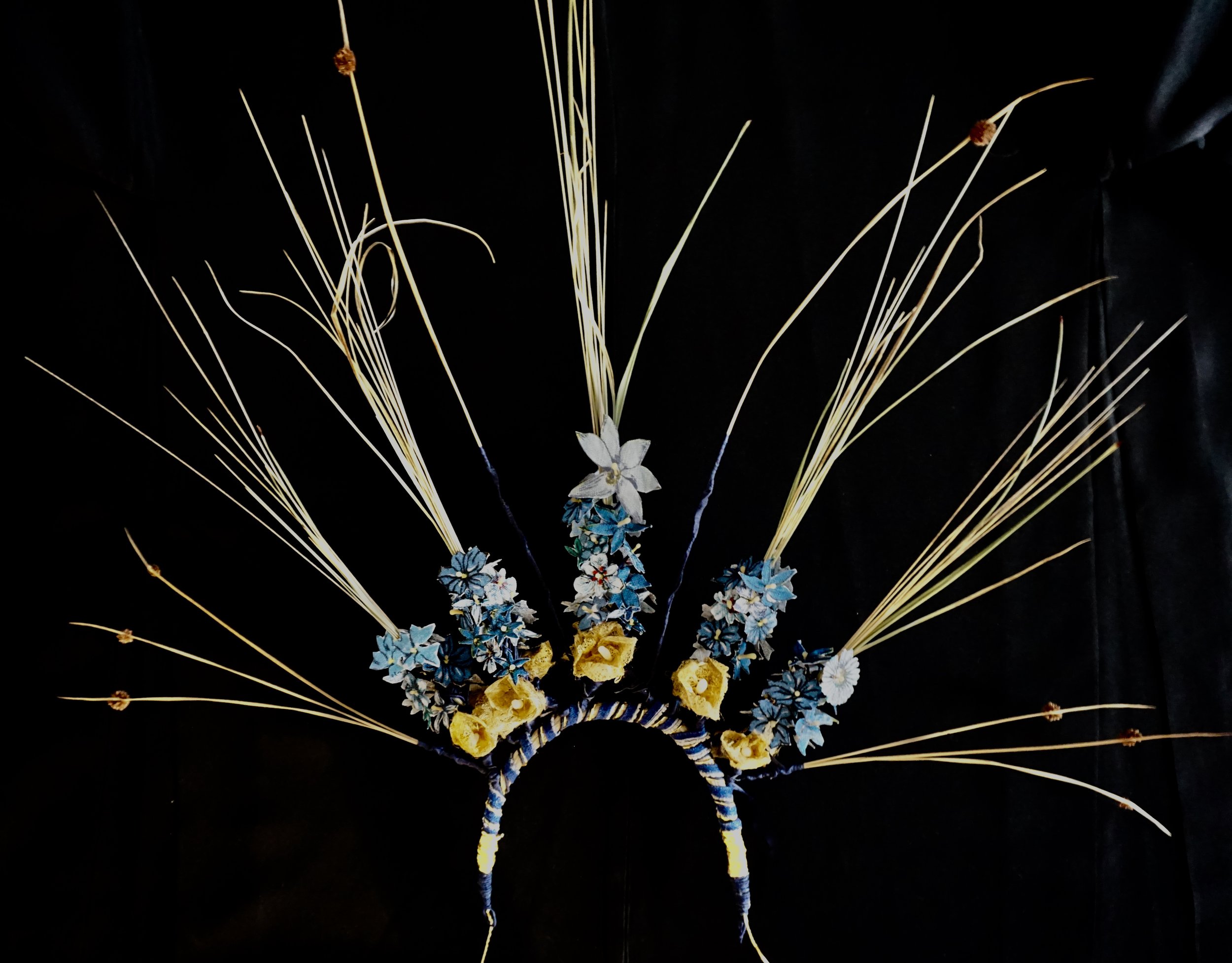


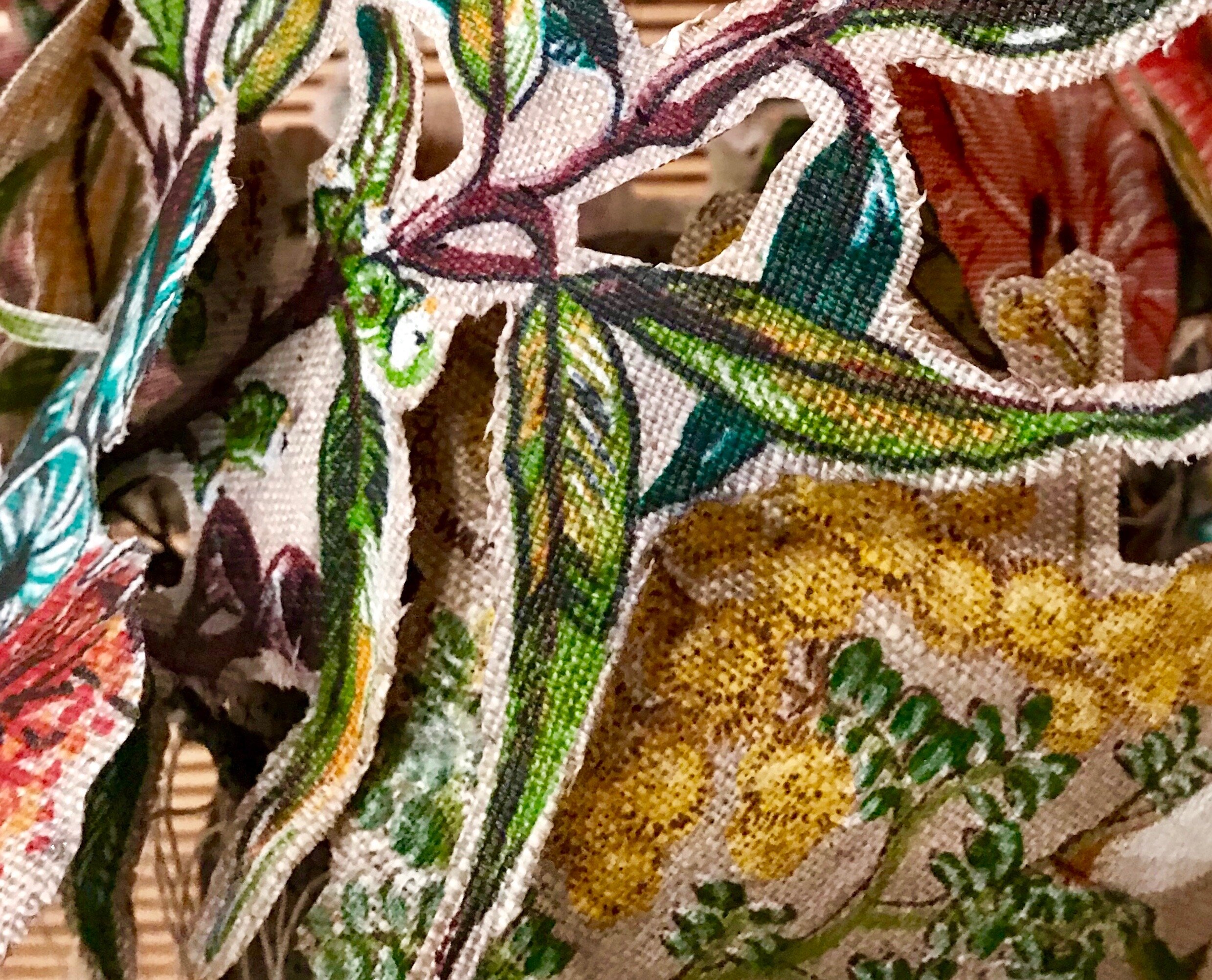
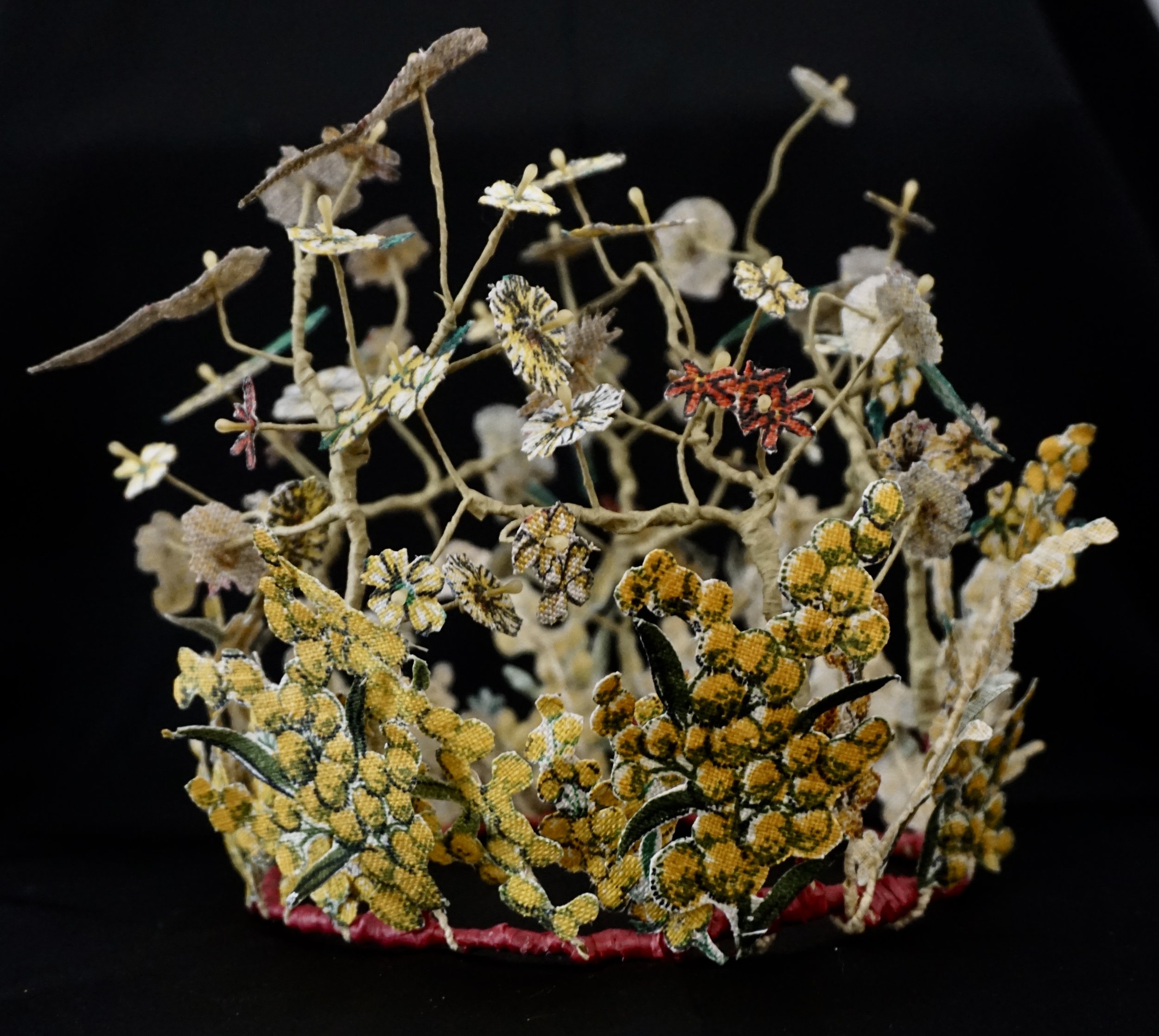
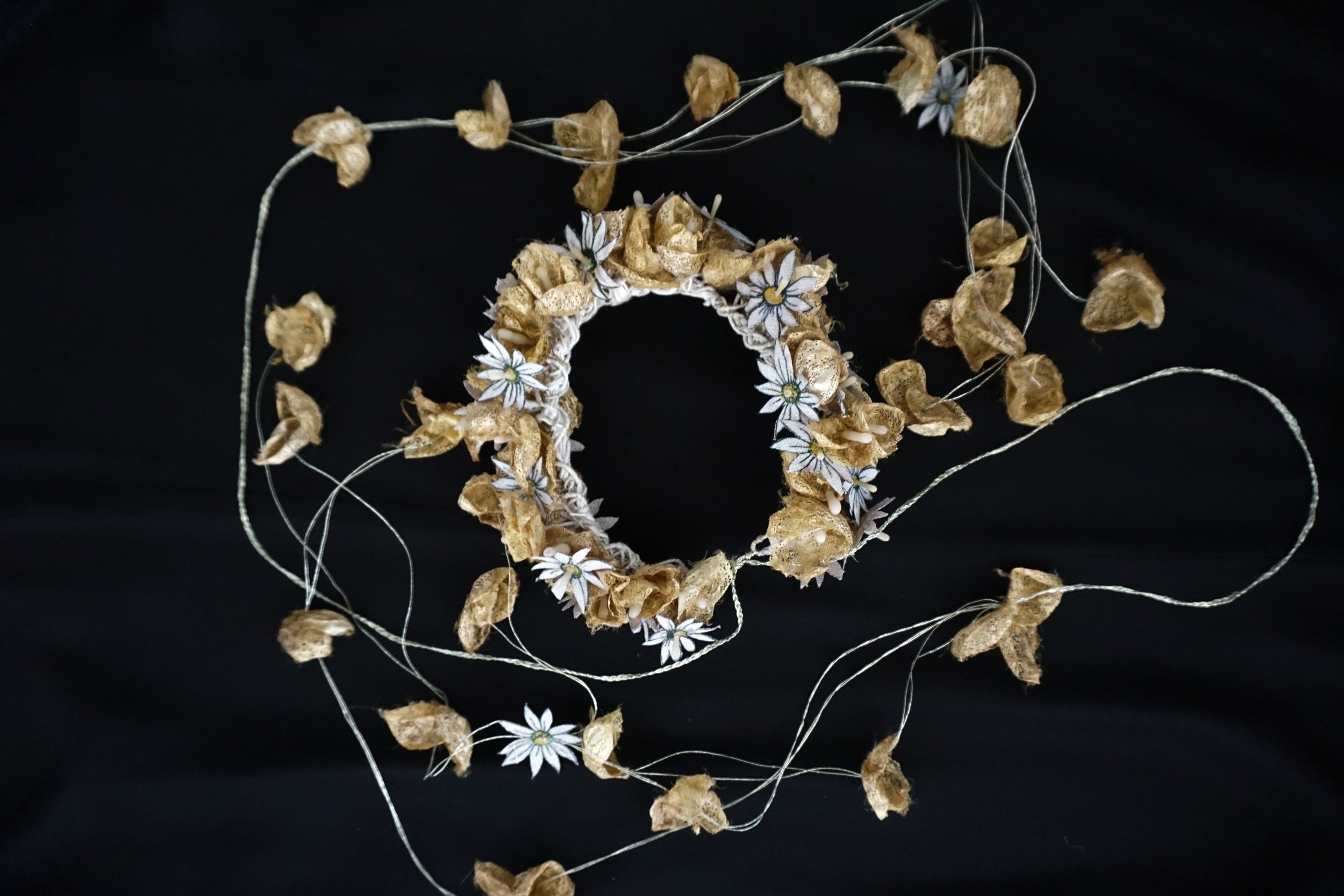
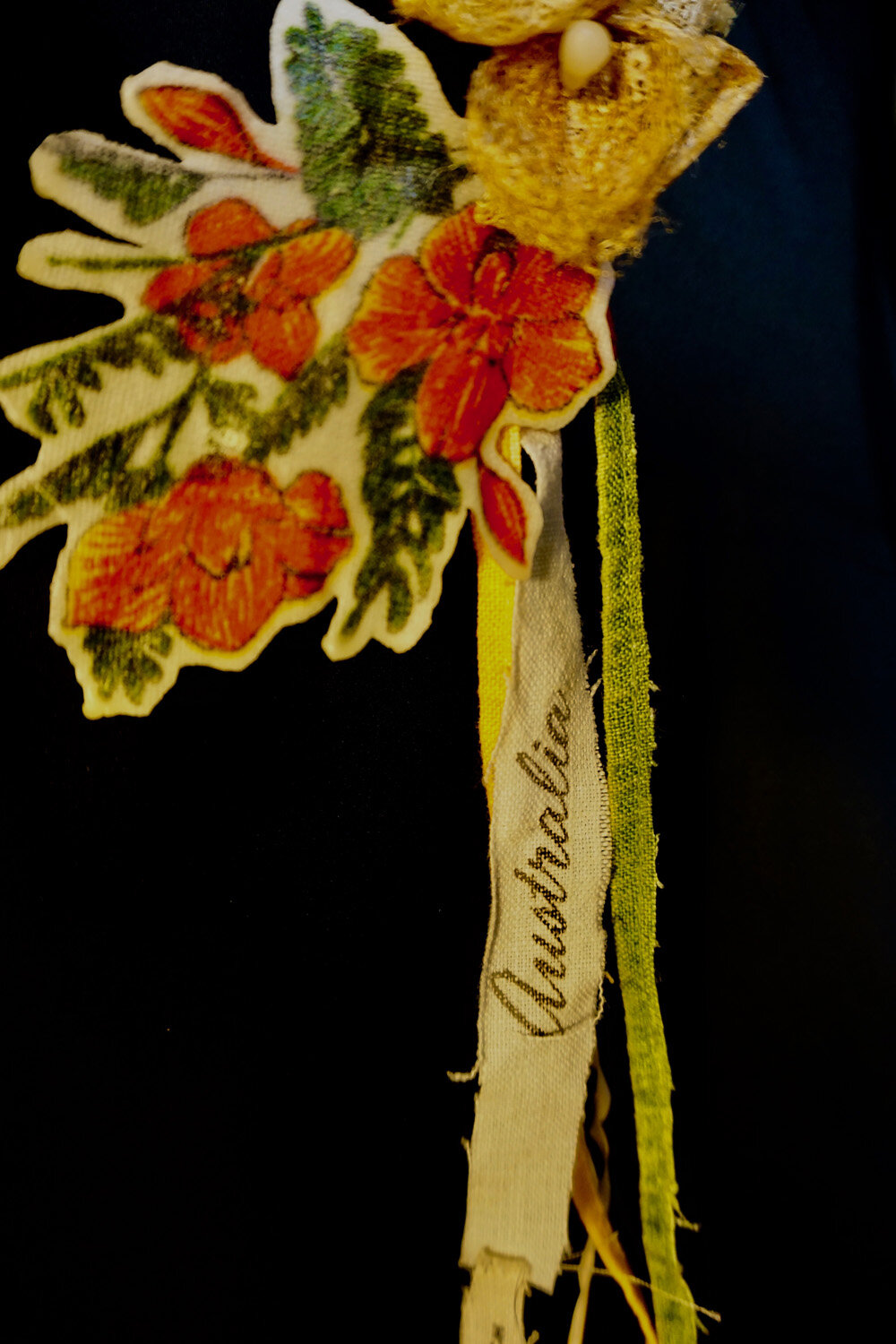
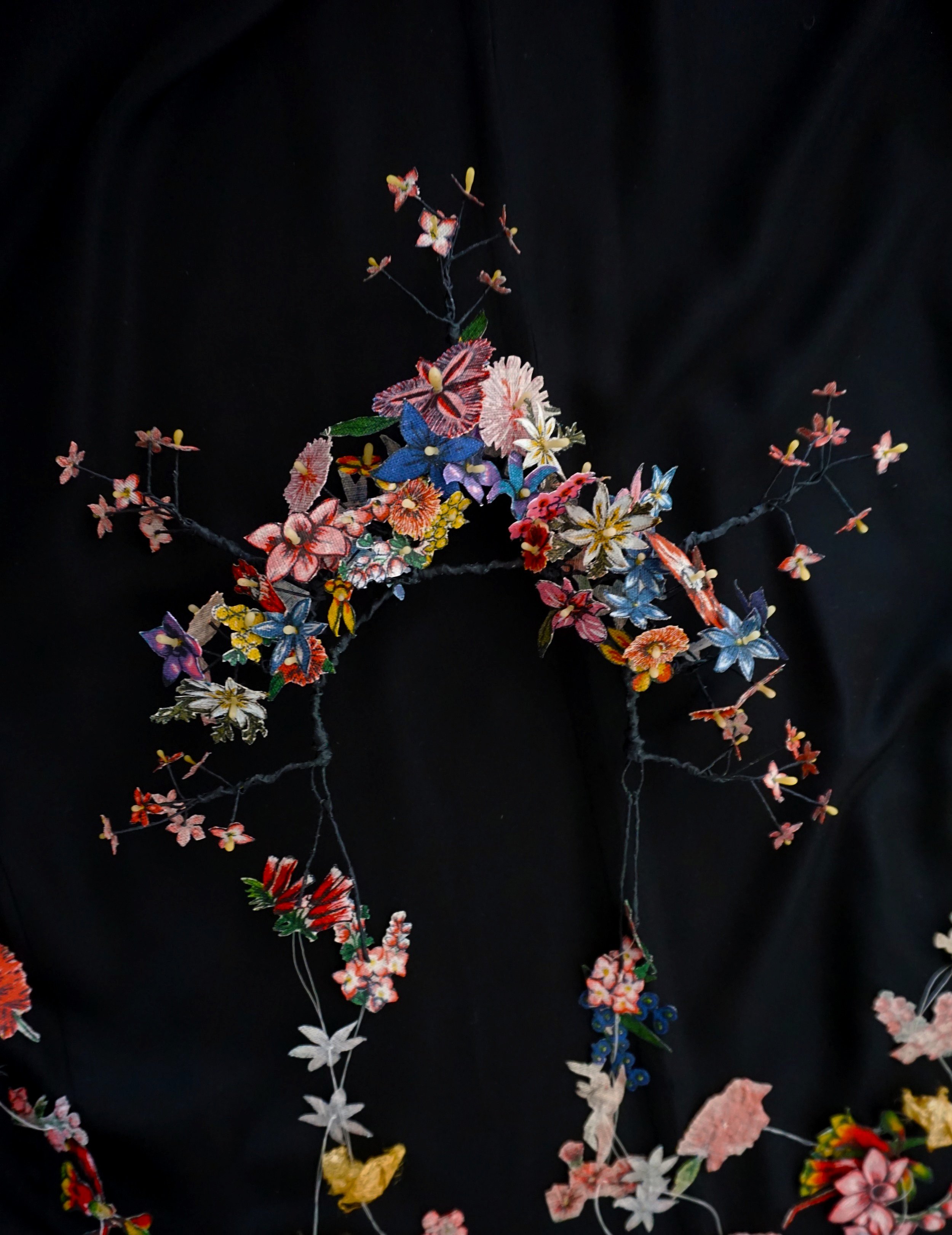
For information about the above artworks and/or overall project, please enquire here.
A found mourning photograph
Heirloom has its origins in this ‘found’ mourning photograph. The woman in the coffin is my Polish grandmother who was deported to and died in a Soviet workcamp in the 1940s. In the image, flowers adorn her shroud; mourners gaze upon her.
Look closely, though, and you will see that the flowers are not fresh; they are made of paper. Notice, too, that all the mourners, except one, are women.
This woman-centric image provokes ideas relating to woman’s place and placelessness: the majority of Stalin’s deportees from Poland were women (and children) and in their exile, they became entrapped in two parallel worlds: one determined by men, and the world of women created as a consequence - women lived and worked together; they grieved and hungered together; and those women who survived took responsibility for burying the dead.
But look again at the image. See the flowers surrounding her head? They are in the shape of the traditional flower headdress commonly worn by young women and brides throughout Eastern Europe. In Polish, this headdress is called wianek (which translates as ‘wreath’), and this pre-Christian tradition has long seen women gathering flowers from forest and field to create wild and ephemeral garlands.
I find it strangely comforting to imagine women making these spectral blooms during a time of such violence, upheaval and loss. So, too, to understand their provenance, the role they played in my grandmother’s funeral, and their generous display upon her casket.
Locating the domestic and contained
Textiles as material object can be seen as a means to preserving and accessing women’s ‘histories’. Textile objects are often associated with the home, with woman’s work and her containment within the ‘domestic space’ and thus, in many ways, her identity. Elizabeth Grosz describes this space as ‘the affirmation and replenishment of others at the expense and erasure of the self’.
Certainly, the plight of the predominantly women deportee demographic can be aligned with this erasure of self, where, in being separated from and deprived of place, they were at once placeless and contained, beyond home and beyond an identity so intrinsically tied to home.
The ‘Australiana’ textile souvenir and the traditional ‘wianek’ headdress, can both be located within the paradigm of the domestic and contained. Even so, the unique cultural signifiers with which both these objects are inscribed also locate them Outside – in nature, with the wild, the exotic, and that Other that refuses containment.
In this way, Heirloom seeks to honour the wild and the ephemeral, the forgotten and the extinct.
Connecting threads and textiles
I ‘found’ my first Australiana, Polish linen tablecloth in a secondhand shop about five years ago, while I was doing my PhD. The design is beautiful with native fauna and flora adorning thick, coarse linen. I was only vaguely aware before finding this piece that there were Australiana textiles ‘Made in Poland’. I’m sure I’d seen them before but they contained no meaning or significance for me until this first find. In some way, still not understood by me, the piece seemed to give meaning and connection to my Polish and Australian heritage, and also to my love of textiles and of nature and the wild.
Over the years, and as my PhD research progressed, this collection grew. While sometimes I would take out the pieces and gaze at them, fold and re-fold them, wonder at their making, they remained largely tucked away and unutilised. I now understand this process, where it seemed as if nothing was happening, as a kind of future awakening. Rainer Maria Rilke described this beautifully when he wrote ‘many signs indicate that the future enters us in order to be transformed in us, long before it happens’.
The decision to make wianek from these Polish linen Australiana tea towels finally took shape in 2019. Incorporating Japanese threads into these pieces is a nod to my own, recently minted ‘grandmotherly’ status and the deep love and connectedness I feel for my Japanese grandson. While it was a whole kaleidoscope of imaginings and thinking that prompted the idea, integral to all of these was a question of identity and belonging that, for me, has always extended beyond borders; an identification of the familial foreign, and of how passages of and journeys across time shape us.
Bloom is a 3-minute looped video developed in collaboration with 2-d graphics artist, Thomas Pentland. It was first shown at Holy, Honest Confluences at ACU Gallery, Fitzroy in 2019.
© All text and images copyright Grace Pundyk 2019
